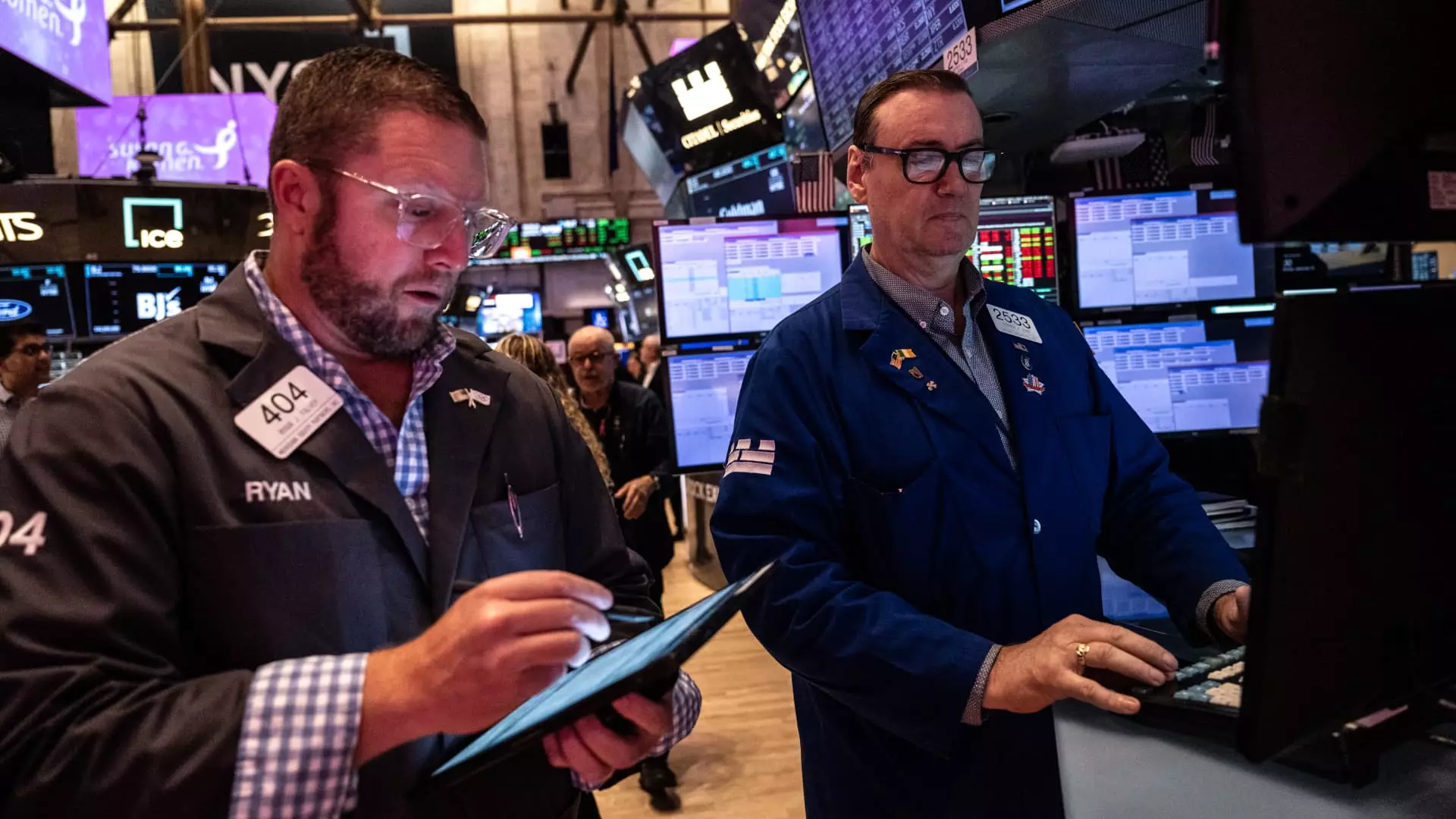In an ever-evolving economic landscape, the shifts in stock markets offer illuminating insights into investor sentiment and broader economic conditions. The recent decision by the Federal Reserve to slash interest rates by 50 basis points has triggered a flurry of activity across various sectors. This article dissects how these rate changes are influencing market dynamics, particularly focusing on the housing sector and major retail players.
The Federal Reserve’s monetary policy decisions play a crucial role in shaping market trends. On Wednesday, after the announcement of the rate cut, a noticeable uptick in consumer sentiment was anticipated. With the cost of borrowing reduced, companies and consumers alike are expected to ramp up spending and investment. This initial optimism was palpable in the stock performance of key players, especially within the homebuilders’ index.
The SPDR S&P Homebuilders ETF (XHB) achieved a remarkable milestone, hitting new highs—the sector has seen a staggering gain of over 10% in just one month. Notably, individual stocks like Beazer Homes, Hovanian, and Toll Brothers have outperformed expectations with gains ranging from approximately 16% to 17.5%. This robust performance indicates a reinvigorated demand for housing and reflects confidence in economic stability, likely propelled by lower mortgage rates resulting from the Fed’s decision.
However, while the homebuilders are flourishing, these bright spots draw attention to the contrasting performances of various industries, including retail and dining. Companies like Cracker Barrel and Darden Restaurants are bracing for earnings reports amid a backdrop of fluctuating stock prices. Cracker Barrel, with a noticeable decline of over 3% from three months ago and a staggering 49% drop from its late December peak, highlights the challenges that retail and restaurant sectors face, possibly due to shifting consumer preferences and increased competition.
As the market braces for the earnings reports of retail giants, FedEx stands out notably with a commendable 20% growth over the last three months. Its position as a bellwether for economic activity positions its upcoming report as a critical indicator of broader market health. Contrastingly, Darden, which manages beloved brands like Olive Garden, has only incremented by roughly 5% in the past three months, underscoring varying recovery rates within the retail sphere.
The dynamic nature of these earnings reports offers investors a rich tapestry of opportunities and risks. While some firms experience significant growth, others reveal underlying vulnerabilities, presenting a mixed bag for market participants.
The banks’ responses to the Federal Reserve’s decisions reflect the undercurrents of caution that characterize the current financial atmosphere. Major banks have experienced downturns this September, notably JPMorgan, which is down over 7%. The yields of Treasury notes, which shifted while responding to the Fed’s cuts, tell a complex story. The increase in the 10-year and two-year yields against a backdrop of lowering yields on shorter-term notes reflects a market that is uncertain about future growth potential. This inversion can signal a potential economic downturn, raising further questions about investor strategies moving forward.
Furthermore, the declining performances of Citigroup, Goldman Sachs, and others illustrate the potential ripple effects of impending economic changes, leading investors to reevaluate their positions carefully.
As traditional markets waver, alternative investments such as gold are garnering increased attention. Jeffrey Gundlach’s comments regarding gold being in an “accumulation mode” resonate strongly with investors seeking stability amidst volatility. The rise of the VanEck Gold Miners ETF (GDX) by roughly 5% in recent weeks encapsulates this growing trend, suggesting that investors are hedging against inflation and market turbulence by turning towards precious metals.
As we decipher the myriad dimensions of market trends following the Federal Reserve’s recent policy changes, it becomes evident that sectors are reacting differently to new economic realities. While the housing market experiences a renaissance, traditional retail faces challenges, the banking sector grapples with uncertainties, and alternative investments like gold gain traction. The unfolding narrative underscores the necessity for resilience and strategic foresight in navigating this complex landscape.

